I used to think I didn’t need an air purifier appliance, but that changed in November 2018 when we experienced extended period of unhealthy outdoor air quality due to the wildfires in California. Living in a passivhaus, we knew that our indoor air quality was good. Our home, Midori Haus, is very airtight and the heat recovery ventilator (HRV) system continuously delivers filtered fresh air throughout the house and extracts stale air from the bathrooms and kitchen. Having lived through a bad wildfire season where heavy concentration of smoke traveled for hundred of miles, I now believe that air purifier is beneficial in a high performance home like passivhaus. In this post I will share my experience with an air purifier (FP-F60UW air purifier made by Sharp) and the simple experiment I did in my kitchen to measure the efficacy.
Here is the back view of the air purifier: small opening where fan pulls in air, large HEPA filter, large charcoal filter, and back cover that keeps dusts out.
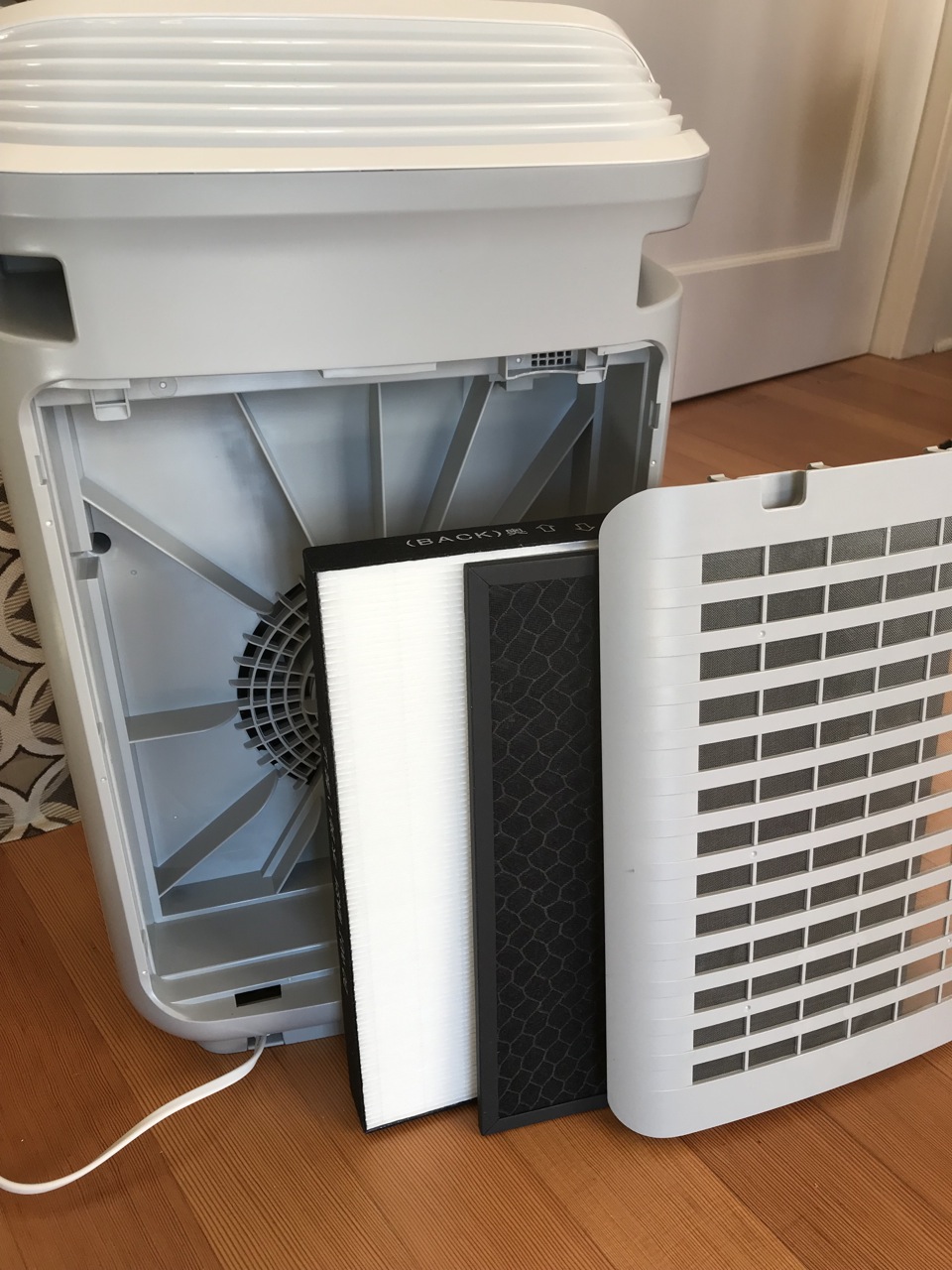
Air purifier is beneficial because it gives us an additional tool for scrubbing the air to reduce malodorous smell and dirty air. Smoke particles and skunk spray particles are so small that they can slip through the filters we have in place in our ventilation system.
We especially appreciate using an air purifier during these times:
1. Unhealthy outdoor air quality. During the recent California wildfire season, the air quality index in Santa Cruz hovered around 179 (unhealthy) and we could smell the smoke inside the house. In the past, we simply turned off the HRV when we detected fire smoke from fireplaces in the neighborhood. This strategy didn't work for us when the smoke lingered outside for over a week. Running the air purifier helped reduce the tiny smoke particles that came into the house.
2. Skunk spraying in the neighborhood. On November 10, 2018, we woke up to a stinky smell inside our house after our neighbor’s dog got sprayed by a skunk in the middle of the night. We worried about the smell lingering during the day because we were about to receive over 20 visitors for a house tour. That worry dissipated after we ran an air purifier (FP-A80UW) for about 10 minutes in each room.
3. Cooking indoors when it is very cold or very hot outside. We often open our windows in the kitchen to quickly flush out the cooking smells. This has the side effect of quickly raising the kitchen temperature (during a summer heatwave) or quickly lowering the kitchen temperature (during a coldsnap). For us, the summer heatwave is more difficult to deal with because we don’t have air conditioning. Using an air purifier speeds up clearing the air in the kitchen. The HRV can remove the cooking odors only so fast.
How effective was the FP-F60UW air purifier in my kitchen? These are the key observations from my kitchen experiment:
Observation 1. Air purifier cut down the time to clear the air in the kitchen by half. This is compared to the baseline of running a recirculating range hood and having the HRV extract the air out of the kitchen.
Observation 2. Air quality is much better when the air purifier is turned on at the start of cooking. Trying the clean up accumulated dirty air post-cooking takes much longer.
Observation 3. The Plasmacluster Ion Technology feature seems to have a greater impact on particles than VOC.
Observation 4. I can still smell the cooking odors in the kitchen even after the air quality monitors indicate a low number. This is probably due to the small particles stuck on the cabinets, walls, and my clothes. Plus our nose is more sensitive than monitoring equipment.
Observation 5. The use of the recirculating range hood over the cooktop didn't seem to help. In fact, it appeared to lengthen the time it takes to clear the air. Perhaps this range hood is due for cleaning and filter change.
Observation 6. The fastest way to clear the air in the kitchen is to open the window. This is best when the outdoor air quality is good.
Observation 7. The air in the rest of the house smells clean. Closing the various doors between the rooms is effective. Our old-house style room layout has a door between the kitchen and the dining room, between the dining room and the living room, and between the living room and the hallway.
Rest of this post will go into the details of my kitchen experiment. If you're curious about them (criteria, method, and equipment) read on. If you're satisfied with the summary above, feel free to stop here.
Kitchen Environment
Unlike modern home with a great room layout, our kitchen is a self-contained room. A pocket door separates the kitchen from the dining room. There is a small gap in the pocket door which allows air from the dining room to be pulled into the kitchen when there is a negative pressure in the kitchen when the HRV is on. There are two houseplants (peace lily and spider plant) in the kitchen. The induction cooktop faces the window and the island range hood hovers over the cooktop.
Area: 206 square feet
Ceiling height: 9 feet
Window: 29 square-foot opening
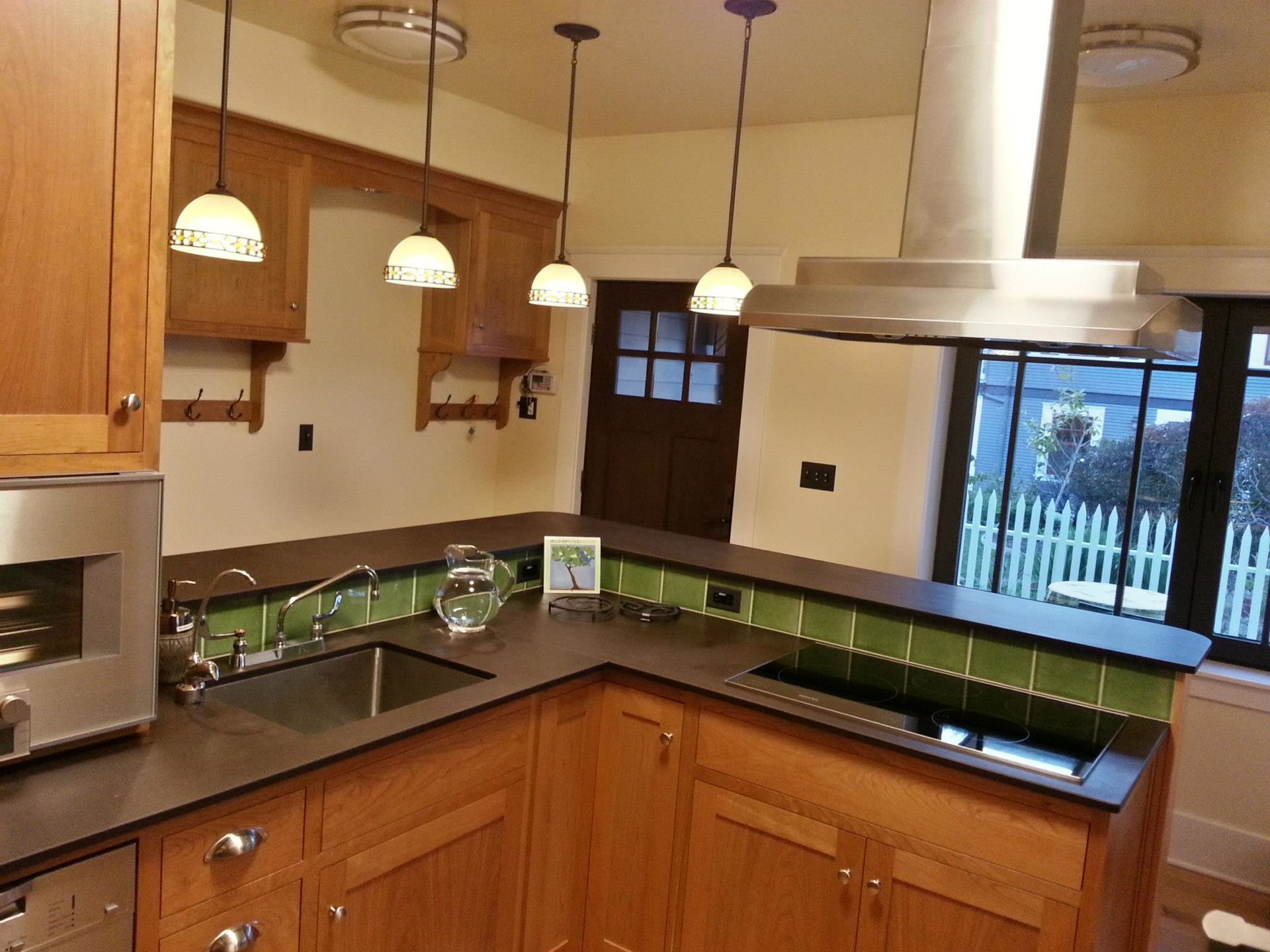
Appliances Used
Miele Induction Cooktop is not a gas cooktop, so no combustion byproducts created during cooking.
Zehnder ComfoAir 350 HRV: In the kitchen there are two exhaust registers for extracting a total 47 CFM on high; one supply register supplying 13 CFM. See this post for the filters installed in the HRV system. (Supply register circled in black in the photo below)
Kobe Recirculating Range Hood: 400 CFM on high. This island type recirculating range hood is no longer made.
Sharp FP-F60UW air purifier: This unit is recommended for a room that is 280 square feet or smaller. 400 CFM on high used for kitchen experiment. This high speed setting measured 48W on my Kill A Watt. At low setting, the 44 CFM fan speed is quiet enough to run it in the bedroom overnight.
Air Quality Monitors
We have three devices in the corner of our kitchen to measure air quality. For description on these and other air quality monitors, take a look at this article from Energy Smart Home Performance.
Dylos Pro measures concentration of particles. The larger number represents a count of particles greater than 0.5 microns. The smaller number represents a count of particles greater than 2.5 microns. (circled in yellow)
FooBot measures particles and volatile organic compound (VOC). (Circled in blue)
WELserver measures and collects temperature, humidity and VOC measures using a custom sensor. (Circled in green)
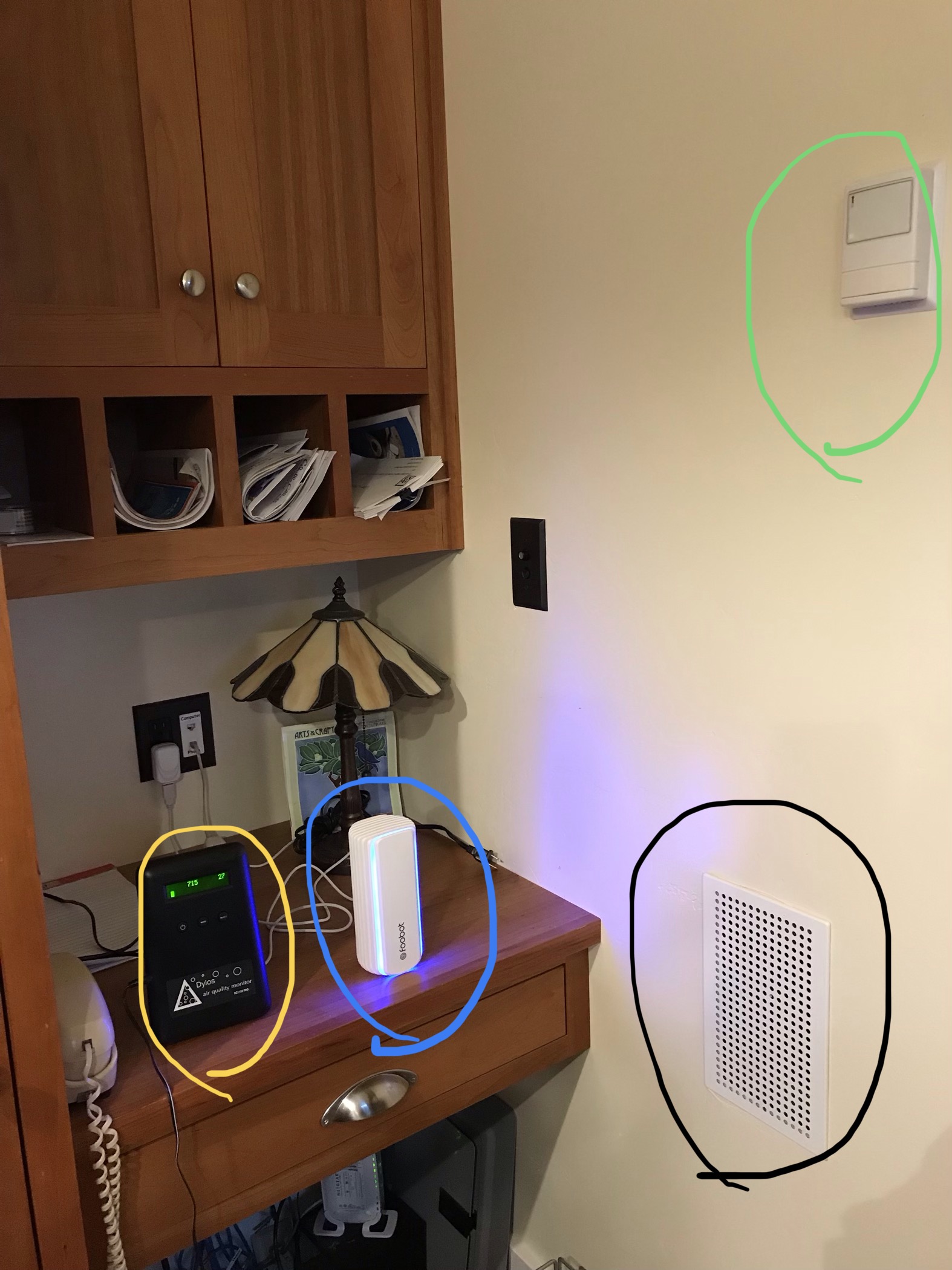
Criteria for “clean air”
I’ve used visual indicator of Foobot. It glows blue when air quality is good and orange when air quality is bad. Measurement was taken at various intervals until Foobot turned blue.
Experiment senarios
For scenarios 1, 2, and 3, two strips of bacon were fried for six minutes total (3 minutes each side) in a cast iron skillet on induction cooktop, then transferred to a plate. Air clearing actions, timing, and measurement began when cooking ended. This measured the efficacy of air clearing action on accumulated dirty air.
For scenarios 4, 5, and 6, two scallion pancakes were cooked in a cast iron skillet each for 14 minutes (7 minutes each side), then transferred to a plate. Air clearing action, timing, and measurement began when cooking started.
Scenario 1: Baseline
This scenario answered the question, “How long does it take to clear the air in our default mode?”
2 strips of bacon
HRV on high
Range hood on high
Measurement started at the end of cooking
35 minutes to clear the air.
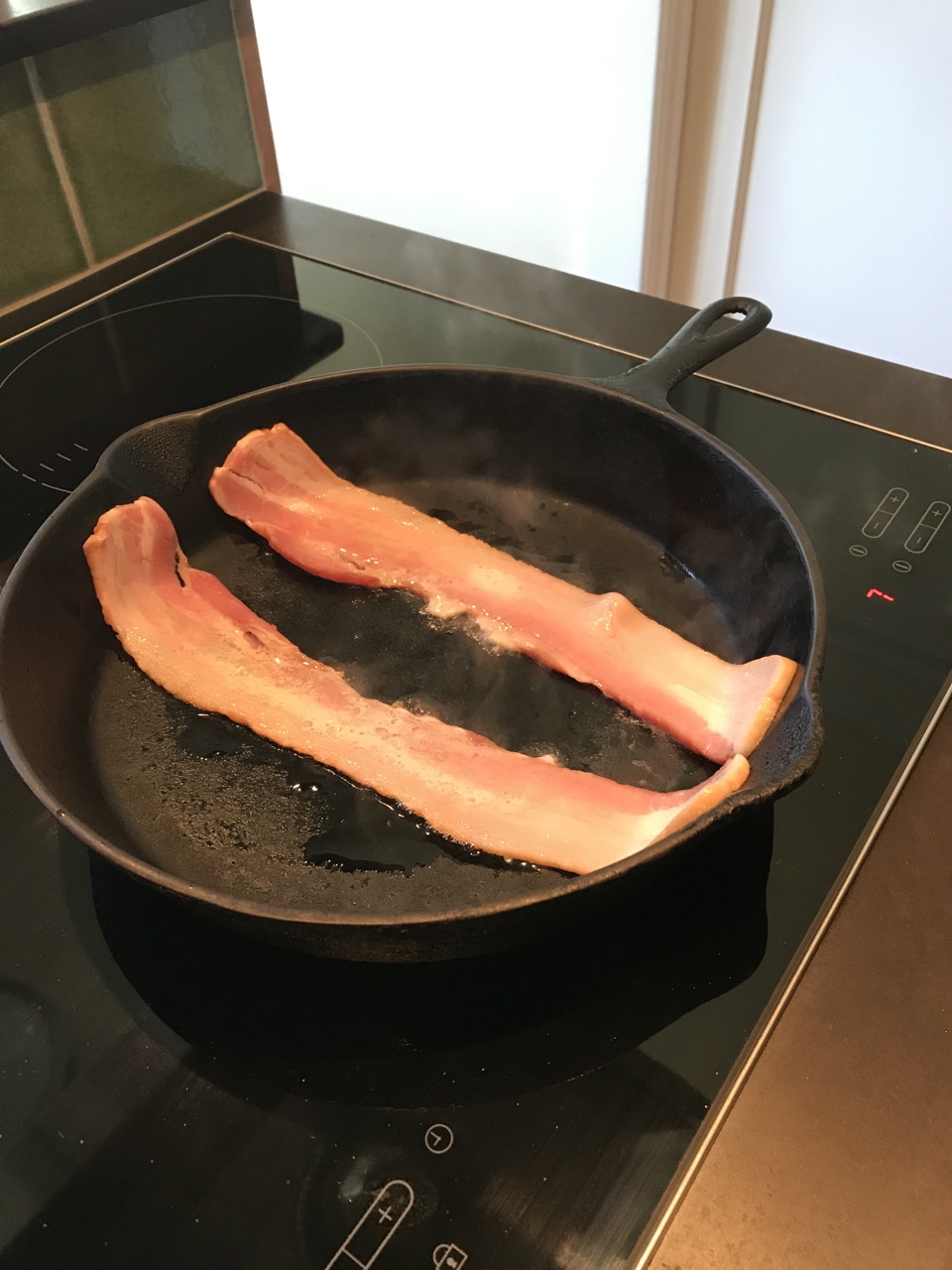
Scenario 2: Open Window
This scenario answered the question, “How long does it take to clear the air by opening the windows at the end of cooking?”
2 strips of bacon
HRV on high
Range hood on high
Opened window and started measurement started at the end of cooking.
External air temperature was 58F, kitchen temp dropped from 73F to 72F.
10 minutes to clear the air.
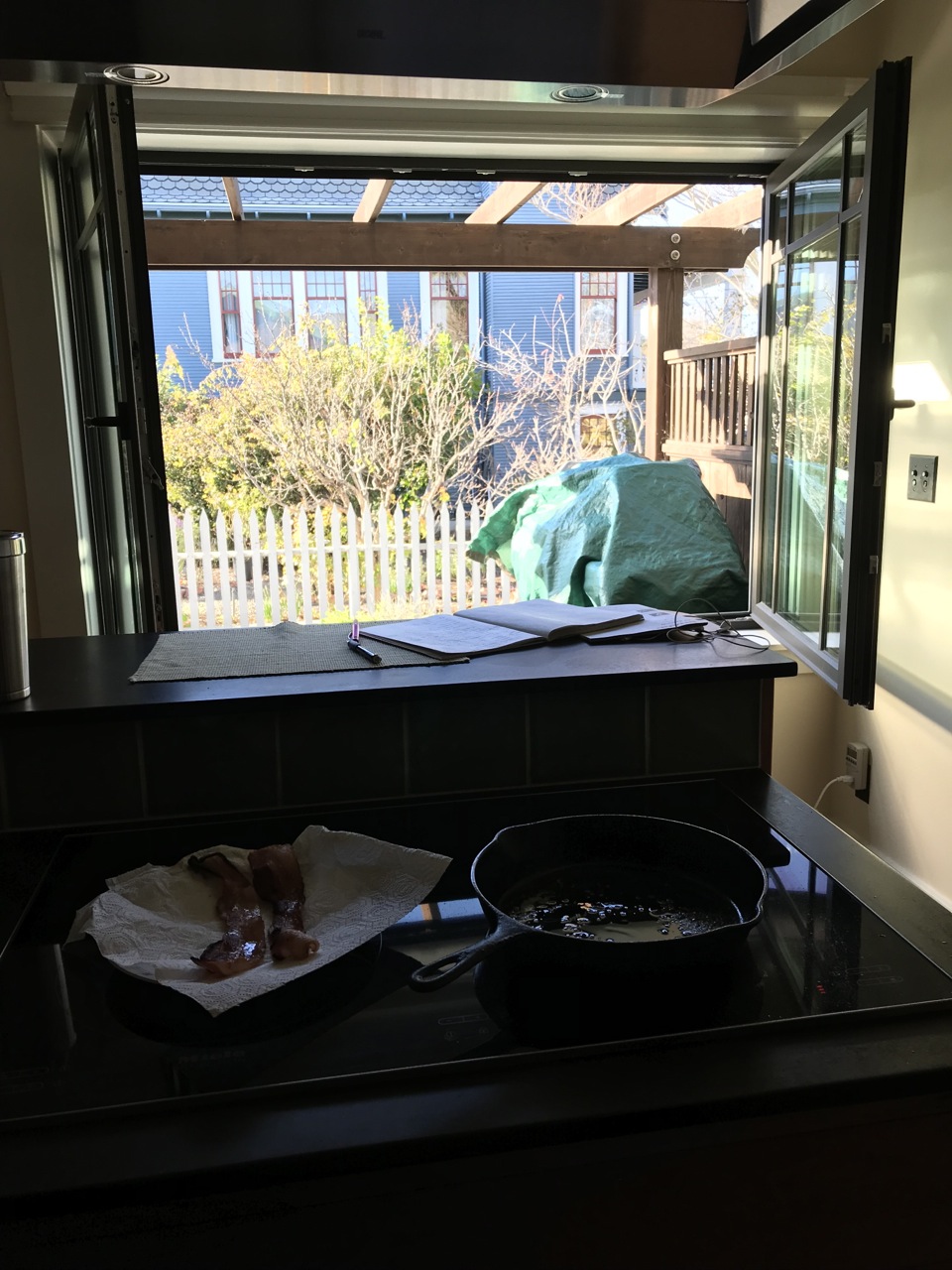
Scenario 3: Air Purifier (Ion on)
This scenario answered the question, “How long does it take to clear the air if the air purifier was used end of cooking?”
2 strips of bacon
HRV on high
Range hood on high
Turned on air purifier (with Ion on) and started measurement started at the end of cooking.
The dust sign on the air purifier turned red, indicating dirty air.
17 minutes to clear the air
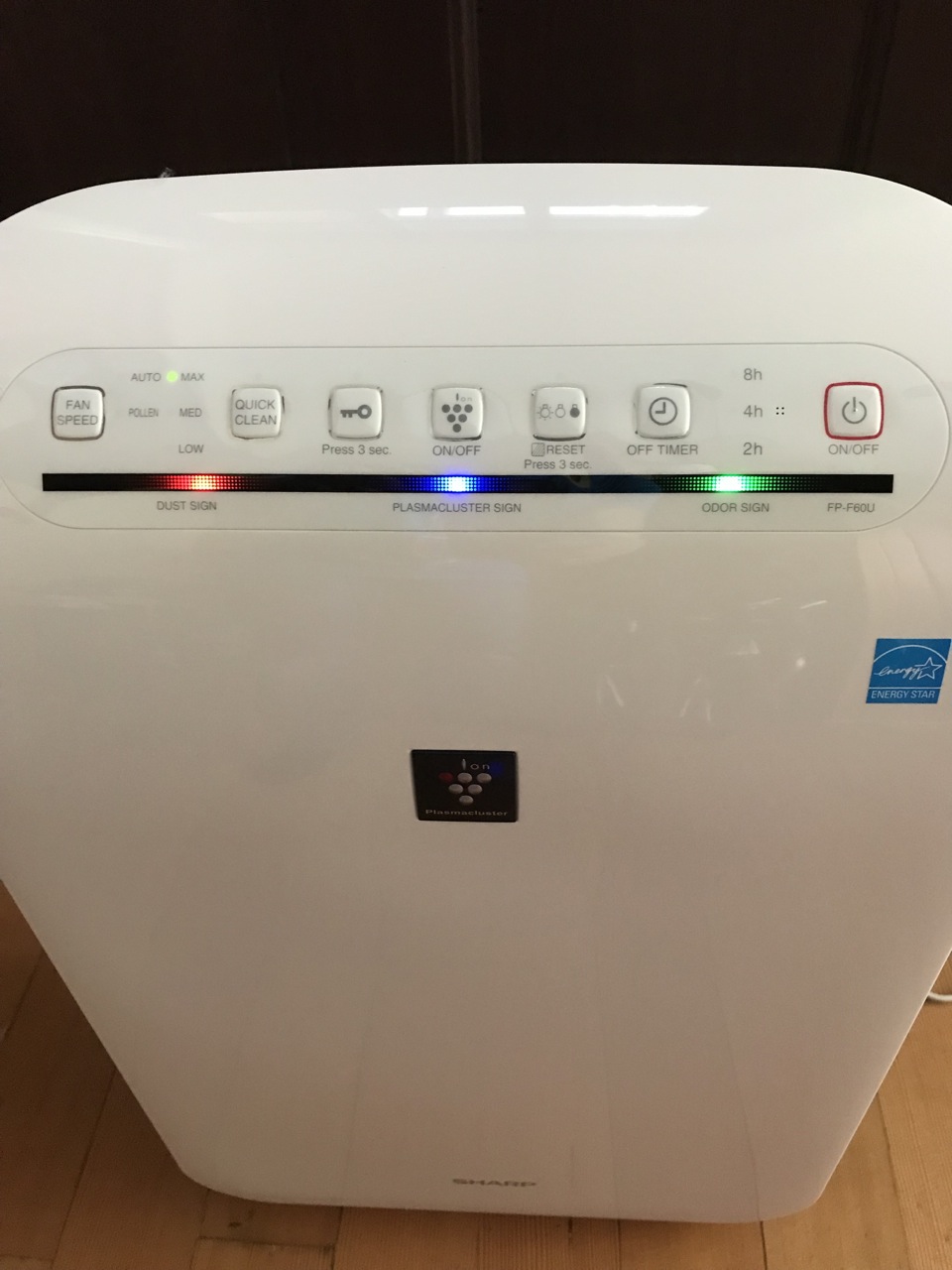
Scenario 4: Air Purifier (Ion on), HRV off, range hood on
This scenario answered the question, “How long does it take to clear the air if the air purifier was used at the start of cooking with the HRV off?”
HRV off
Range hood on high
Turned on air purifier (with Ion on) and started measurement started at the start of cooking
43 minutes to clear the air
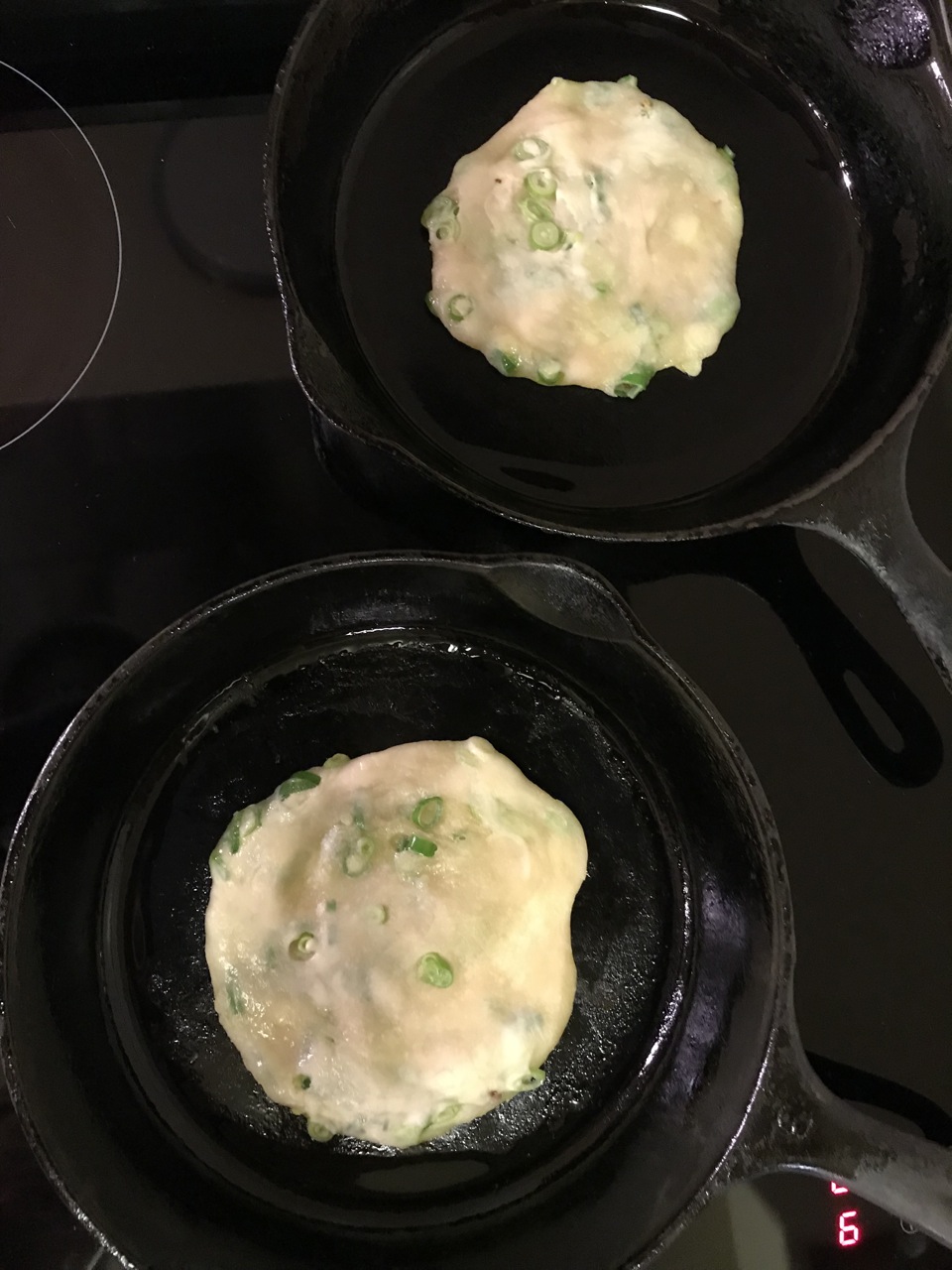
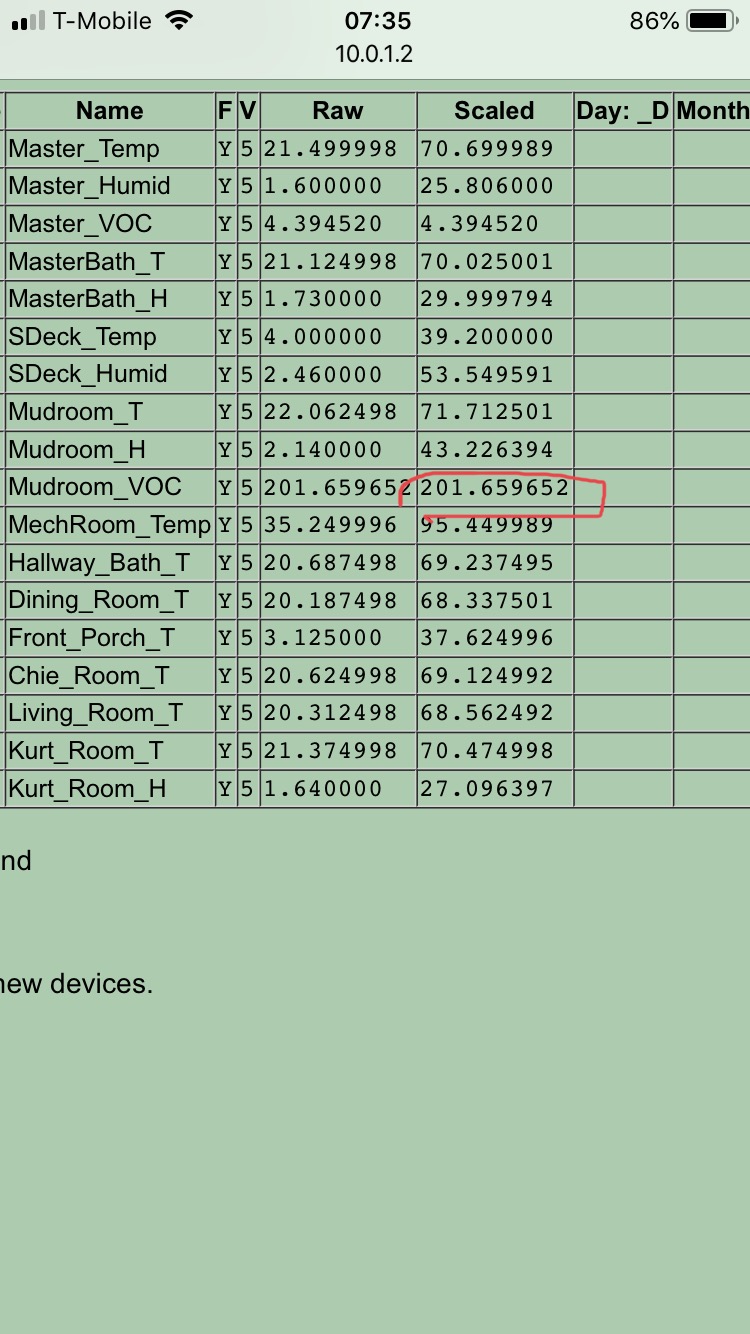
WELserver data display
Scenario 5: Air Purifier (Ion on), HRV on, range hood off
This scenario answered the question, “How long does it take to clear the air if the air purifier (with Ion on) was used at the start of cooking with the HRV on and range hood off?”
2 scallion pancakes
HRV on high.
Range hood off
Air purifier (Ion on) was turned on at the beginning of cooking.
Initial measurement was taken at the beginning of the cooking.
Air was clean the entire time. (Foobot never turned Orange!)
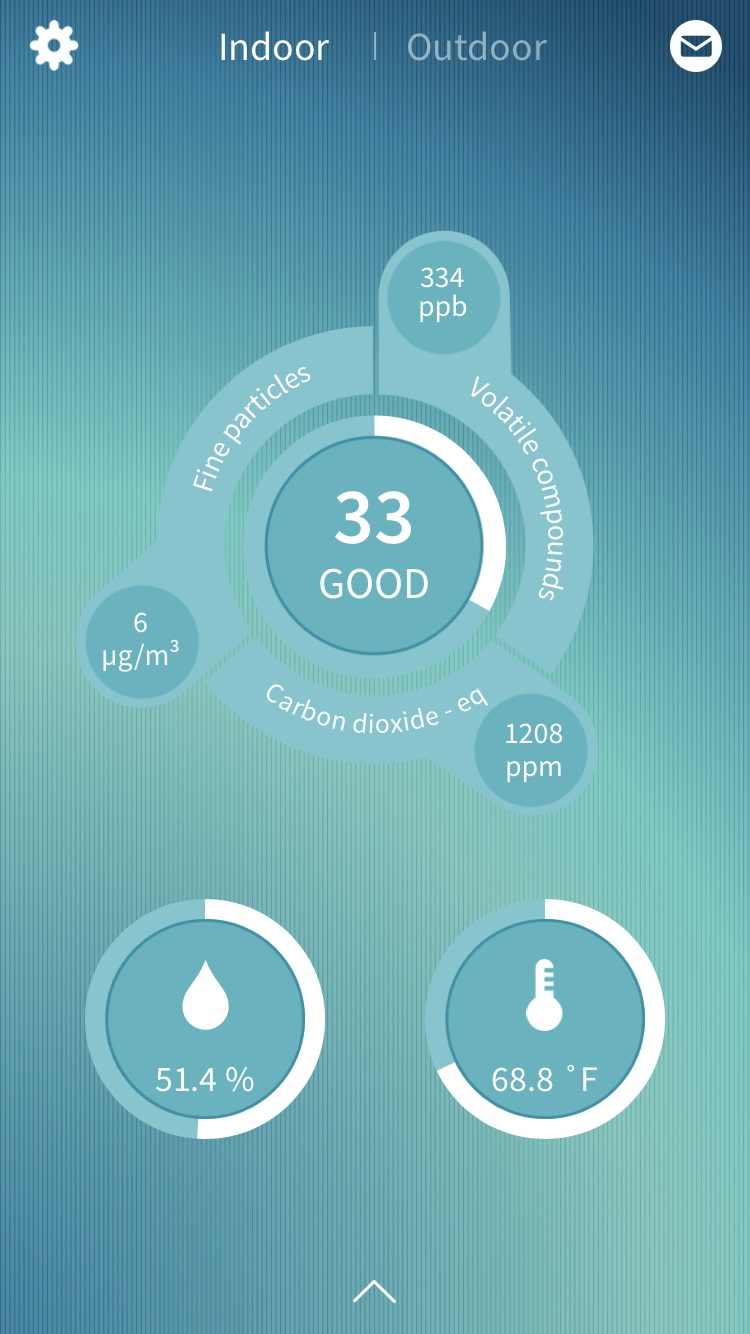
Scenario 6: Air Purifier (Ion off), HRV on, range hood off
This scenario answered the question, “How long does it take to clear the air if the air purifier (with ion OFF) was used at the start of cooking with the HRV on and range hood off?”
2 scallion pancakes
HRV on high.
Range hood off
Air purifier (Ion off) was turned on at the beginning of cooking.
Initial measurement was taken at the beginning of the cooking.
Air was clear the entire time. (Foobot never turned Orange!)
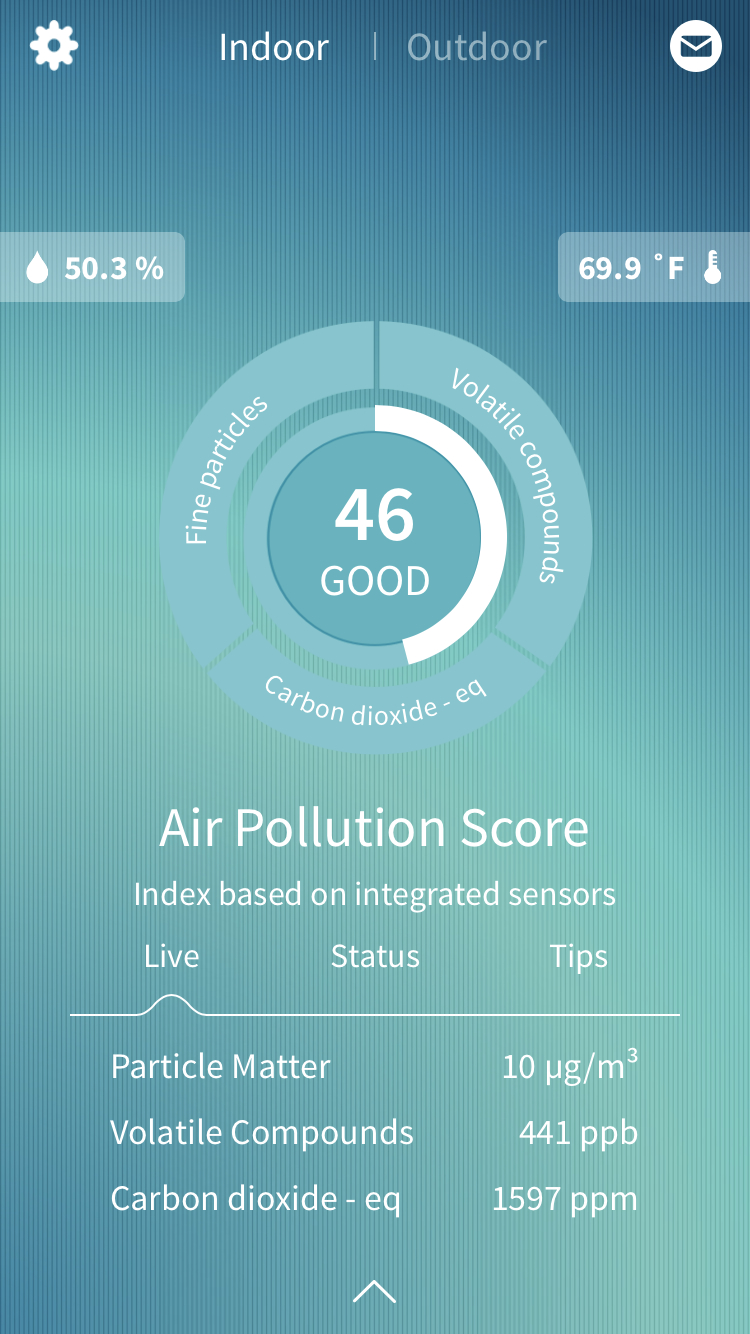
If you're still reading and are curious about the test data, take a look at this Google Docs spreadsheet.
Thank you for reading this post. This air quality measurement experiment gave me a better insight to the effects of cooking and indoor air quality. I hope it's helpful to other homeowners and to home performance professionals.